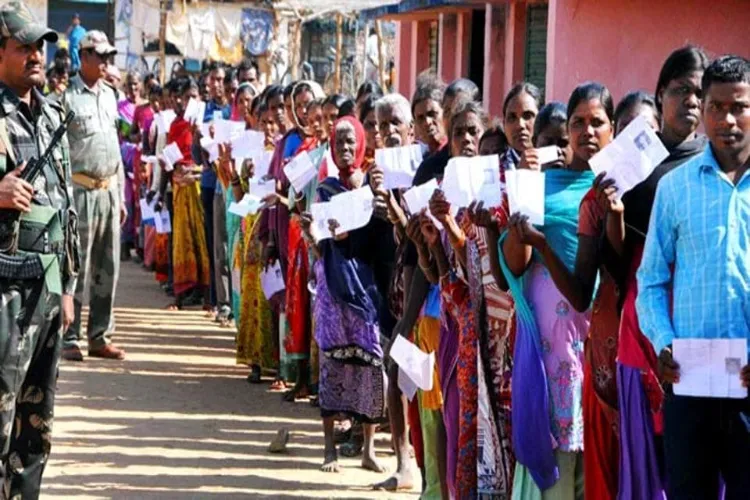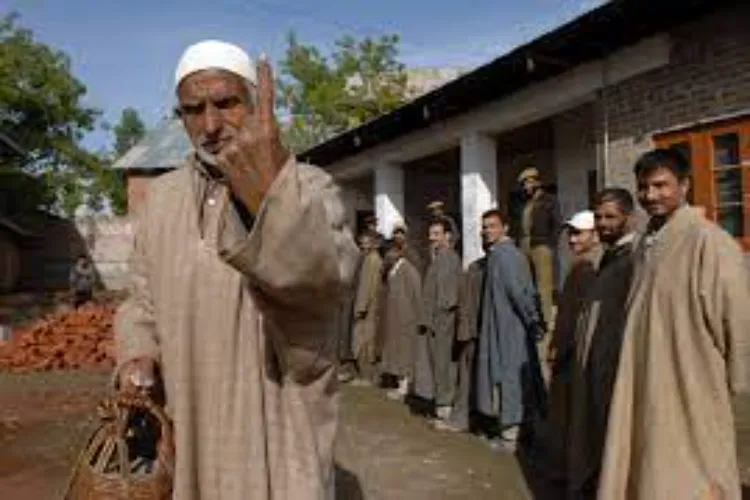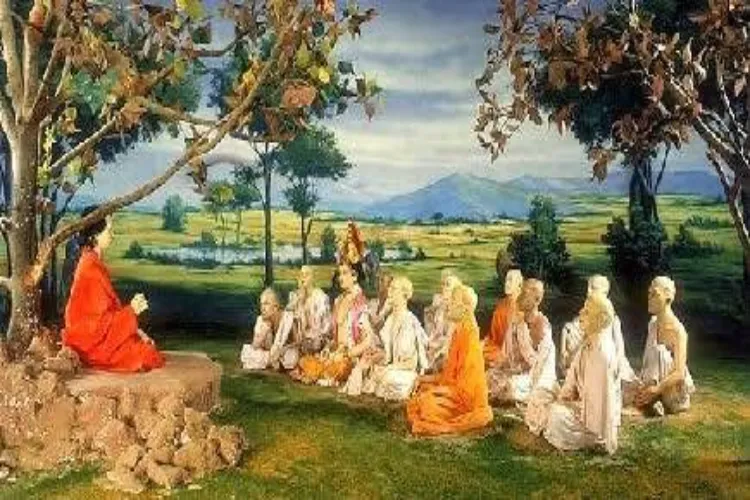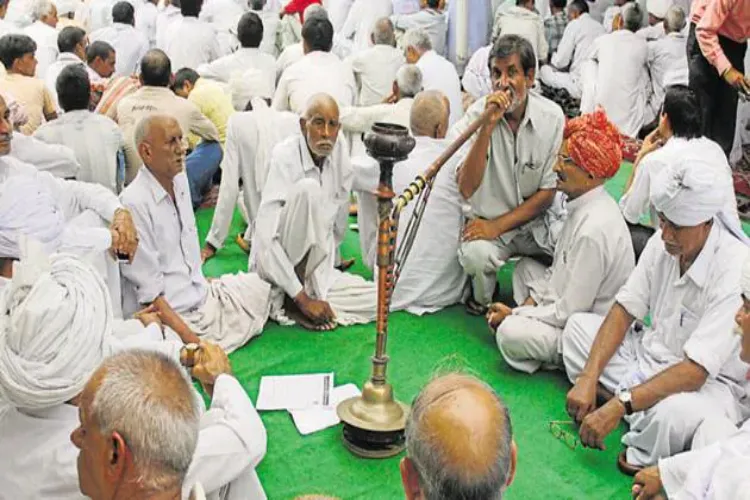.webp)
Shekhar Iyer
As the International Day of Democracy on September 15 provides an opportunity to review the state of democracy in the world, we in India get an opportunity to ask ourselves again: are we the biggest democracy or the oldest democracy in the world?
Many believe that democracy as a political system goes back to ancient Greece, particularly Athens. Cleisthenes (508-507 BCE), the father of Athenian democracy, introduced a system where all male citizens had equal political rights, freedom of speech, and opportunity for political participation.
It had three institutions. Firstly, the Eklesia, a sovereign governing body, wrote laws and dictated foreign policy, Secondly, there was a council of representatives from the ten Athenian tribes. Lastly, there was the Dikasteria, legal courts in which citizens argued cases before a group of jurors picked by lot. However, this democracy survived for only two centuries.
There's no doubt about the size of our democracy. Just look at elections in India whether they are for electing members of Parliament and state legislatures, numbering more than 4,800.

Voters in queue to vote displaying their voter cards
If you add the figure of elected sarpanches, gram pradhans and mukhiyas, the figure could run into thousands.
Can we have democracy without holding elections? Can we hold elections without having democracy?
Elections in India today are the most visible symbol of the democratic process. They are considered the best examples for the world, particularly the free and fair manner they are conducted by a special body, the Election Commission. Indian elections use electronic voting machines and vote-verifiable devices in thousands of polling booths.
It is no surprise that many countries have turned to India's election body for training their staff for holding elections. Recently, the Indian Council of Historical Research (ICHR) came out with a book, "India: The Mother of Democracy."

A voter shows his mark after casting his vote in the Panchayat elections in Kashmir
The essays in the book describe the evolution of democratic traditions in India over the ages. It covers the sabha and samiti of the Vedic period, the gana sanghas, Kautilya’s Arthashastra, democratic or pro-people leanings of the Kakatiyas, Kashmir under Sultan Zain-ul-Abdin, local self-governance in Tamil Nadu, Buddhist democratic ideals, democratic traditions of Namdharis, Bhils, northeastern tribes, and Haryana’s khap panchayats, and continuation of the panchayat system under the East India Company.
The United Nations believes democracy is as much a process as a goal, and only with the full participation of and support by the international community, national governing bodies, civil society, and individuals, can the ideal of democracy be made into a reality to be enjoyed by everyone, everywhere.
Freedom of expression is a fundamental human right, enshrined in Article 19 of the Universal Declaration of Human Rights. India's journey in democracy can be seen as a process as well as a goal for the betterment of all its citizens, irrespective of class or creed.
In India, for time immemorial, we have been open to ideas and thoughts received from all sides, absorbing some and leaving aside thoughts that do not serve people at large.
None other than Prime Minister Narendra Modi has spoken about the nature of Indian democracy from ancient times. Modi has often asserted that India is the “mother of all democracies”, drawing upon the legacy of ancient republics like Vaishali, and expressed satisfaction over the nation’s march towards becoming a “mature democracy.”

An artists' imagination of Gram Sabha meeting in ancient India
“India is a democracy because we believe in saamanjasya (harmony)….. We are often told that India is the largest democracy. I would like countrymen to remember that we are not just the largest; India is the mother of all democracies,” Modi said at a function in Patna in July last year organised on the occasion of centenary celebrations of the Bihar Assembly.
In April this year, Modi reiterated that India is the world’s oldest democracy. "There are numerous historical references to this. An important reference is in Tamil Nadu,” he said. Modi added that in Tamil Nadu’s Uthiramerur, an inscription around 1100-1200 years old gives a glimpse of democratic values in the country.
“The inscription found there is like a local constitution for the gram sabha. In this, it has been told how the Assembly should be run, and what should be the process to elect the members. Not only that, in that era, they had decided how a member would be disqualified,” he said.
Inscriptions on the walls of the Vaikunda Perumal Temple at Uthiramerur in Tamil Nadu, which have been dated to 920 CE, detail an elaborate system of local self-governance that elected councils by secret ballot.
Similar inscriptions have been found in other parts of the state, indicating that an early form of democracy was prevalent in ancient times. Modi has since used the phrase multiple times.
Uthirameur is located in present-day Kanchipuram district, 90 km southeast of Chennai. Today, it is said to have a population of roughly 25,000 plus if you go by the census of 2011. It is known for its historic temples built during Pallava and Chola rule.
Uthiramerur has multiple inscriptions covering centuries. However, the most famous one is from the reign of Parantaka I (907-953 AD). These provide a detailed description of the village’s self-governance and have been cited by historians as evidence of India’s history of democratic functioning.
The famous inscription from Parantaka I’s era is found on the walls of the Vaikunda Perumal Temple. It gives details of the functioning of the village assembly.

A Khap Panchayat meeting in Western UP
A sabha was an assembly exclusively of Brahmans and had specialized committees tasked with different things. It details how members were selected, the required qualifications, their roles and responsibilities, and even the circumstances in which they could be removed.
It then goes on to describe what the qualifications for such a representative must be. These include ownership of a certain amount of land, having a house, being between the ages of 35 and 70, and “knowing mantras and Brahmanas” (from the Vedic corpus).
The inscription gives grounds to disqualify someone and their family (all the relations are systematically listed) for “not having submitted accounts” while previously serving in a committee, committing any of the first four of the five ‘great sins’ (killing a Brahman, drinking alcohol, theft and adultery), being associated with outcastes, and eating ‘forbidden’ dishes.
All those eligible and willing would write their names on palm leaf tickets following which, the representative would be chosen based on an elaborate draw of lots, conducted by priests in the inner hall of the building where the assembly meets.
Anyone in the committee who was implicated in any wrongdoing, such as forgery or having ridden a donkey,( punishable crimes), was removed instantly.
By today's standards, of course, it may not be a truly democratic system. Not only does it restrict sabha membership to a tiny subsection of land-owning Brahmanas, it also does not have true elections in the manner we have today. Rather, it chooses members from an eligible list of candidates through a draw of lots. If this is so, should this not be cited as a precedent for democratic functioning?
ALSO READ: Five takeaways from the Delhi G20 Summit
For that matter, India did not have developed systems of democracy, as decision-making in ancient republics even in the case of Lichchhavi was a privilege of the ruling clans. Wealth and caste played a big factor. However, what we must appreciate is that the idea of a democracy, as described today, is a recent phenomenon even in the United States, which gave universal adult franchise to all its women only by 1965. India adopted universal adult franchise rights in 1947. That is no small achievement, given its size and diversity.
Shekhar Iyer is a Delhi based senior Journalist
